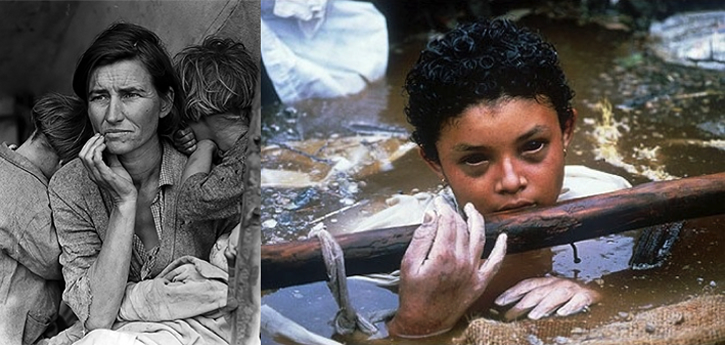How classic photojournalism can inform your visual storytelling
You have most likely heard that using visual content is important in marketing endeavors. In fact, 40% of users online have been known to provide more favorable responses to visual content versus plain and text-based content. Combine this with the fact that photography has become a nearly universally accessible medium for most people, and you have one of the most powerful tools in the box for nonprofits, fundraisers, and social activists.
So how do you utilize your own images to this end? Let's take a look at some examples of stirring visual storytelling to answer that question.
One of the earliest examples is photography used by the FSA (Farm Security Administration) in the 1930s. Photographers like Dorothea Lange—whose Migrant Mother is featured below—were hired to document the plight of poor farmers as part of the FSA's efforts to combat American rural poverty. In a more recent example, photojournalist Frank Fournier sparked international outrage from his imagery in The agony of Omayra Sanchez in the 1980s (below right).
 Dorthea Lange, Migrant Mother
Frank Fournier, The agony of Omayra Sanchez
Dorthea Lange, Migrant Mother
Frank Fournier, The agony of Omayra Sanchez
These photographs were, and still are, incredibly powerful. Some of that power comes from the skill and artistry of the photographers, but a large part of it comes from their authenticity and ability to communicate the story and struggle of the subjects.
Now, taking this concept to the nonprofit sector, look at these two examples from Covenant House and No Kid Hungry. Both are quite different in terms of style and mood, but both have yielded very strong results:
 Covenant House 2014 Holiday Campaign
Covenant House 2014 Holiday Campaign
 No Kid Hungry 2015 Summer Meals Campaign
No Kid Hungry 2015 Summer Meals Campaign
These may not be as groundbreaking as the famous photos I mentioned earlier, but they do an excellent job of conveying the cause of the organization, evoking emotion, and telling a compelling story.
When you are deciding how to incorporate your own visual content, ask yourself a few key things:
-
Does it remain true to your mission?
-
Is it still consistent with your organization's style and brand?
-
Is the content's message clear? Meaning, will people actually understand what you are saying and what you want them to do?*
*Don't forget! You can use engaging text with your visuals to better drive home your organization's message, like in the examples above.
-
Most importantly, will it lead to an action? (Remember you want your audience to feel something and then do something!).
Photography has been employed as a tool for social change for decades. So no matter your nonprofit's goals, in the end, having a powerful image behind it can make all the difference when convincing someone to support your cause.
What are some ways your organization has been incorporating visuals to engage your supporters? Have you noticed any unique results? Tell us your story on Facebook or Twitter
Like what you read? Check out this related post:
